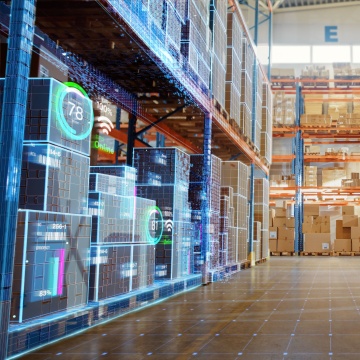Supply chains are no longer just about transportation of goods in today’s digitally connected and fast-paced world. Modern day supply chains are also about delivering traceability, visibility, and actionable insights at every stage. As more and more businesses embrace real-time monitoring and smart logistics, condition-based indicators and data loggers from ShockWatch have emerged as excellent tools for Internet of Things (IoT)-enabled supply chains.
In response to globalisation, growing consumer expectations, and stricter compliance regulations, traditional supply chains are evolving rapidly. This has resulted in the adoption of IoT technologies that allow real-time tracking of any asset’s location, condition, and performance through connected devices.
A wealth of data is generated by smart supply chains powered by IoT, including temperature, humidity, shock, tilt, and vibration levels. This data can be extremely valuable when it is integrated into decision-making processes.
How ShockWatch Supports the IoT Ecosystem
ShockWatch indicators and loggers have been used for decades to detect impact, mishandling, and environmental deviations during transit. These tools have now become increasingly relevant in the IoT landscape. Whether a TiltWatch indicator on a sensitive industrial equipment or a ShockLog impact recorder tracking a machine shipment, the ability to record, communicate, and act on data in real time is the foundation of smart logistics.
ShockWatch single-use indicators as well as data loggers and recorders can fit seamlessly into IoT-enabled systems. When used in combination with IoT devices, single-use Indicators provide a visual indication of tilt, damage, or exposure to temperature. On the other hand, data loggers and recorders form a crucial node in IoT frameworks by facilitating transmission of data in real-time via cellular or Wi-Fi networks.
IoT Integration with ShockWatch Devices
Discussed below are some of the most important benefits of using ShockWatch devices for IoT integration.
- Logistics teams can monitor shipment conditions in real time by connecting ShockWatch devices to cloud-based platforms. alerts are triggered immediately, in case there is a shock or temperature deviation.
- Real-time alerts allow logistics providers and manufacturers to intervene before products are damaged beyond usability.
- An additional layer of accountability is added to the supply chain by IoT-enabled monitoring. Recorded data can be used an evidence of deviations or mishandling for internal quality audits, insurance claims and dispute settlements.
- Data collected by devices helps companies identify recurring issues and trends. With the help of these insights, businesses can refine their shipping, vendor selection, and packaging.
- Proof of safe handling is often required by regulated industries such as medical equipment, pharmaceuticals, food, etc. Integrated solutions from ShockWatch generate verifiable data, enabling organizations to comply with standards such as GDP, FDA, and ISO regulations.
Final Thoughts
Relying solely on traditional tracking methods can be a huge risk for businesses at a time when global logistics is becoming more complex and high-stakes. ShockWatch’s integration into IoT-enabled supply chains enhance customer satisfaction, reduce loss, and ensure compliance by empowering organizations to move from reactive to proactive management.
By using the smart logistics tools ShockWatch, in addition to protecting goods, supply chain leaders can build a smarter and more resilient future for global trade.


